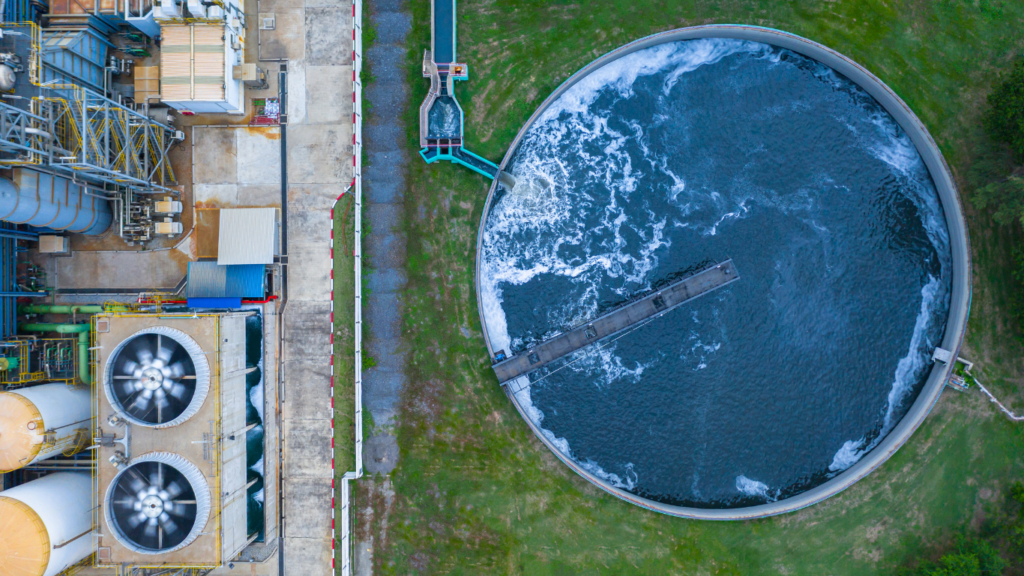The world’s insatiable appetite for food puts immense pressure on agriculture, and consequently, fertilizer production. This industry, while crucial for feeding the planet, carries a hefty environmental footprint. Water pollution from fertilizer wastewater is a growing concern, threatening ecosystems and public health. As concerns about water scarcity and pollution intensify, the adoption of sustainable practices becomes imperative. This blog explores the promising future of sustainable practices in fertilizer production, focusing on the revolutionary concept of Zero Liquid Discharge (ZLD).
What is Zero Liquid Discharge (ZLD) ?
Zero Liquid Discharge is a water treatment process that aims to eliminate liquid waste from industrial processes, ensuring that no liquid effluent is discharged into the environment. This approach is gaining traction in fertilizer production due to its potential to address water scarcity issues and mitigate environmental impact.
Imagine a fertilizer plant without a single drop of wastewater leaving its gates. Instead, highly sophisticated treatments transform every bit of water used into crystallizable solids or clean water ready for reuse. The Zero Liquid Discharge by Scaleban minimizes environmental impact and unlocks a future of sustainable fertilizer production.
Take the first step towards implementing ZLD in your facility. Contact us for more information!
The Problem with Fertilizer Production Industries –
Fertilizer manufacturing is a water-intensive process, consuming significant resources and generating concentrated wastewater containing salts, nutrients, and other contaminants. Discharging this wastewater untreated is irresponsible and detrimental to the environment. It pollutes surface and groundwater, disrupts aquatic life, and can even impact agricultural productivity in the long run.

Achieving Zero Liquid Discharge: The Key to Sustainable Fertilizer Production
ZLD technology goes beyond mere treatment by aiming to eliminate wastewater discharges entirely. Through a combination of processes like evaporation, crystallization, and membrane separation, ZLD recovers valuable resources from wastewater and concentrates the remaining solids into manageable waste products. This not only protects water resources but also creates opportunities for resource recovery and circular economy practices.
How Scaleban’s ZLD Solutions Transform Fertilizer Manufacturing!
Scaleban, a leading innovator in ZLD solutions, offers unique and sustainable technologies like the Scaleban Cooling Tower Zero Liquid Discharge (CT-ZLD) system. This innovative approach leverages existing plant waste heat to evaporate wastewater within the cooling tower circuit, eliminating the need for additional energy-intensive processes. For more details, you can check out our case studies.
Take the first step towards implementing ZLD in your facility. Contact us for more information!
Here’s why ZLD is the future of sustainable fertilizer production:
1. Water Conservation
Agriculture is a thirsty giant, and fertilizer production guzzles a significant portion of precious water resources. ZLD significantly reduces water consumption in fertilizer production by recovering and reusing water from the effluent stream. This not only conserves water resources but also minimizes the environmental impact of water extraction.
2. Environmental Conservation
Conventional fertilizer wastewater overflows with nitrogen, phosphorus, and other contaminants, threatening ecosystems and drinking water sources. By preventing the discharge of liquid effluents containing pollutants, ZLD contributes to a cleaner environment. This is particularly crucial in regions where water bodies are vulnerable to contamination from industrial activities.
3. Resource recovery
ZLD doesn’t just treat wastewater but it also extracts valuable resources. Nutrients like recovered phosphorus can be repurposed in fertilizer production, reducing reliance on finite, environmentally damaging mining.
4. Compliance with Regulations
Many countries are tightening regulations around industrial wastewater discharge. Implementing ZLD ensures that fertilizer production facilities comply with stringent environmental standards, avoiding legal issues and potential fines.
The adoption of ZLD technology with Scaleban solutions in fertilizer production aligns with several SDGs:
SDG 6 – Clean Water and Sanitation: ZLD promotes responsible water use, ensuring the availability and sustainable management of water resources.
SDG 12 – Responsible Consumption and Production: Sustainable fertilizer production through ZLD contributes to responsible resource use and reduces the environmental impact of production processes.
The future of sustainable fertilizer production is intricately linked to the adoption of environmentally friendly practices such as Zero Liquid Discharge. As the agricultural industry continues to evolve, embracing these technologies will be crucial in ensuring a balance between meeting the growing demand for fertilizers and safeguarding the health of our ecosystems. Zero Liquid Discharge is not just a technology by Scaleban but it’s a commitment to a greener and more sustainable future for agriculture and the planet as a whole.As the world grapples with food security and environmental concerns, Scaleban offers a beacon of hope by embracing ZLD technology. Fertilizer producers can become responsible stewards of our planet, leaving a legacy of sustainable agriculture for generations to come.
